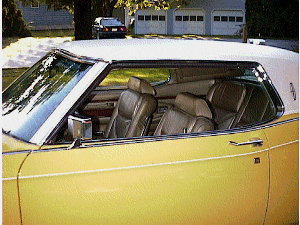Most people call it a "Lincoln", but you won't find that name anywhere on a Mark III. It is more accurately called a Continental. Built from 1968 through 1971, the Mark III was the last of a breed...
 by the 1970's, automakers had to design their products around safety bumpers, emissions equipment, and wind tunnel tests. The Mark III was built for style, comfort, and power first and foremost... when production ceased after the 1971 model year, the Mark IV was introduced as its replacement, a fine automobile in its own right, but lacking the distinctiveness, character, and quality of its predecessor.
by the 1970's, automakers had to design their products around safety bumpers, emissions equipment, and wind tunnel tests. The Mark III was built for style, comfort, and power first and foremost... when production ceased after the 1971 model year, the Mark IV was introduced as its replacement, a fine automobile in its own right, but lacking the distinctiveness, character, and quality of its predecessor.
 by the 1970's, automakers had to design their products around safety bumpers, emissions equipment, and wind tunnel tests. The Mark III was built for style, comfort, and power first and foremost... when production ceased after the 1971 model year, the Mark IV was introduced as its replacement, a fine automobile in its own right, but lacking the distinctiveness, character, and quality of its predecessor.
by the 1970's, automakers had to design their products around safety bumpers, emissions equipment, and wind tunnel tests. The Mark III was built for style, comfort, and power first and foremost... when production ceased after the 1971 model year, the Mark IV was introduced as its replacement, a fine automobile in its own right, but lacking the distinctiveness, character, and quality of its predecessor.





